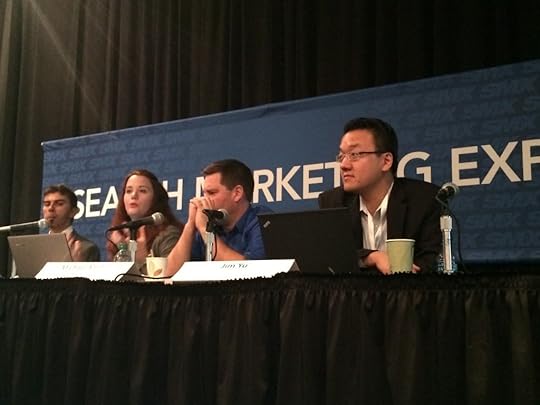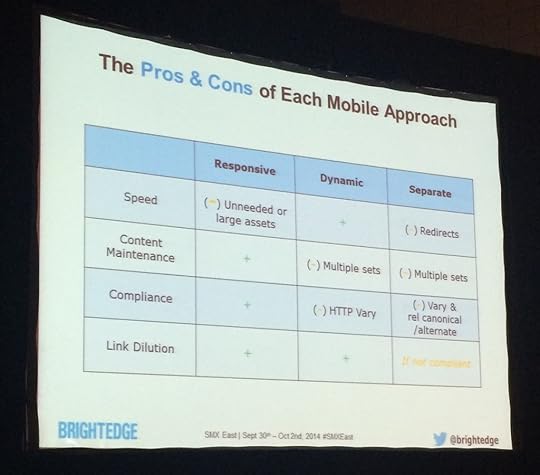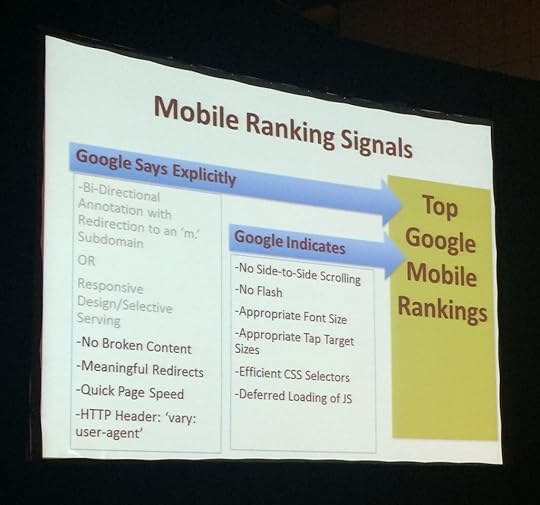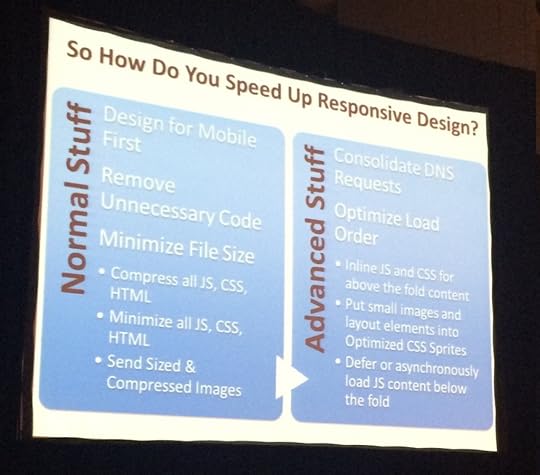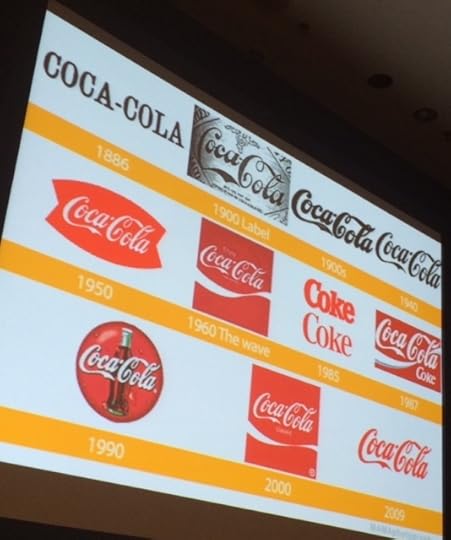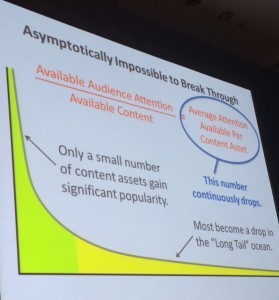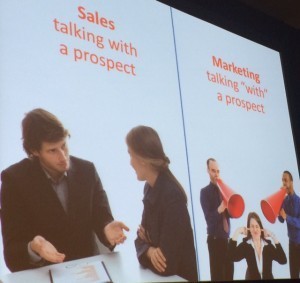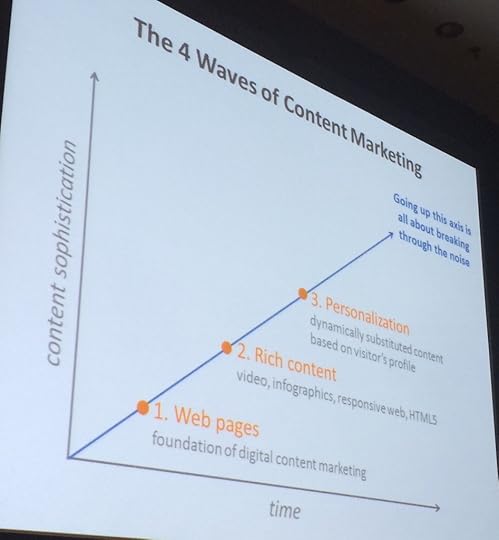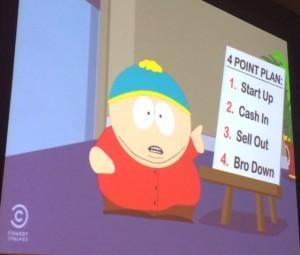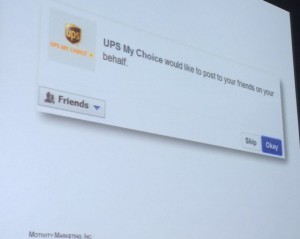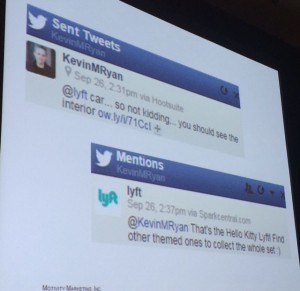Bruce Clay's Blog, page 40
October 1, 2014
SMX East Liveblog: What SEOs Should Be Doing with Mobile
SMX East Liveblog: What SEOs Should Be Doing with Mobile was originally published on BruceClay.com, home of expert search engine optimization tips.
When it comes to mobile, Google prefers responsive design. But there is no ranking boost or penalty for using this method when designing your mobile site. Cindy Krum, Michael Martin, Jim Yu and Gary Illyes talk about what happens when sites use dynamic serving, separate sites and responsive design — or some combination of all three.
Speakers:
Gary Illyes, Webmaster Trends Analyst, Google (@methode)
Cindy Krum, CEO, MobileMoxie (@suzzicks)
Michael Martin, SEO Manager, Covario (@mobile__martin)
Jim Yu, CEO, BrightEdge (@jimyu)
Michael Martin: What Advanced SEOs Should be Doing about Mobile
The past seven years has been the year of mobile – but this year really IS the year of mobile. Mobile search is now 40% of all search.
Say you’re doing a search for pizza, there’s an implied intent of looking for something local – in results like that, there’s a staggering difference between the SERP served on desktop and the SERP served on a mobile device.
Responsive Design has been seen as the panacea for mobile – but Martin believes the future is dynamic serving.
Page speed is very important for usability. It’s also important to make sure your buttons are finger-friendly.
Martin emphasizes that it’s important to include the following on mobile when relevant:
The stock of product available nearby
Top (Insert Number) Products/Services
Reviews (especially local)
Videos and interactions with products (he mentions Kelly Blue Book’s function that allows mobile users to turn a car around and look at it from different views via mobile device/touch)
Click to Call and Locations
Jim Yu: Comparing Approach, Response and Risk with Data
Fast facts from BrightEdge research:
Mobile search is growing ten times faster than desktop search.
Organic search via smartphones has been growing 50% year over year.
62% of keywords have different ranks between desktop and mobile.
Error Rates
Separate Sites: 72% of sites have errors
Dynamic Serving: 30% of sites have errors
Responsive Design: negligible amount of errors
Most Common Errors
When your mobile site has an error, it goes down on average by 2 points in rank – the result? According to Yu’s research, 68% lost opportunity on mobile.
Yu says that enterprises need to evaluate the risks of:
Misimplementation: Smartphones are on only becoming more important. Can you risk losing smartphone share?
Ongoing Maintenance: You’ve configured everything correctly, but with each website release, the configuration needs to be checked.
The Pros and Cons of Each Mobile Approach
Cindy Krum: Mobile SEO & Page Speed
Google has been testing its mobile results — things are changing rapidly.
Product Schema is gone for organic, but still there for paid search.
“Load time is super important for mobile SEO and usability”
You don’t have to commit 100% to one mobile type – part of your site can have one architecture and other pages can have a different architecture. If it provides a better user experience, then you should do it. Google is not against this if it’s warranted.
Mobile Ranking Signals
Quick tip: When testing, at least be using an iPhone 4.
How to Make a Mobile Website Faster
If you want someone to convert and stay on your site for a long time, they’re not going to do it if you have poor page speed. Above the fold content needs to load in one second.
The biggest concern with responsive design is its effect on page speed. Google prefers responsive design … but it also prefers fast load time. Responsive design has to be designed to be extremely fast.
Speeding up Responsive Design
Gary Illyes: Insight from Google
Part of his job at Google is to browse the Internet, look for errors and find solutions.
You need to get your site mobile-ready.
77% of mobile users have researched a product or service from their phone.
61% of users said that they are unlikely to return to a mobile site they had trouble accessing.
How do you create a mobile-friendly site? It’s all documented on Google. Mobile-friendly means the site is:
Available
Legible
Usable
While Google does prefer responsive design, Illyes states Google does not give a ranking penalty or boost based on the type of site you create.
He reminds the audience not to disallow resources – “It helps us understand your pages and understand that your pages are mobile-ready.”
More than anything, he encourages to make the user happy. Focus on user experience. Have your friends and family test your site.
September 30, 2014
SMX East Liveblog: The Importance of Imagery
SMX East Liveblog: The Importance of Imagery was originally published on BruceClay.com, home of expert search engine optimization tips.
This is a collection of thoughts on images. It’s kind of free form and stream of consciousness. Our presenter, Rhonda Hanson, Sr. Director of Digital Marketing, Global Marketing, formerly of Concur (@concur), thinks about using images to your advantage and points out a few dos, don’ts and trends. Her slide deck is here.
Trend: Everyone takes photos on their mobile.
At Pope Francis’ inauguration, a sea of people took photos and video on their mobile devices.
Trend: Images as a major component of website design
Next in her stream of consciousness presentation of images is a comparison of WSJ and NBC News sites. You’ll see an image heavy experience on NBC in this example, but six months after she took the first screenshots, NBC reverted to a less-heavy image experience. Their readers may not have been sure what to do with the images or how the images and stories related. It’s still an experimental time for many websites and images.
When Bing launched its image background in 2009, they saw a lift in visitors and click-through rate. Bing looked to add more engagement to their site. Google plays around with its doodles and has made them interactive.
Do this: Google Product Listing Ads
On a mobile device, you’ll see a horizontal scroll of products and in her experience the products are more relevant. PLAs show 50% more engagement than text ads. PLAs are growing 40% YOY.
Do this better: Facebook Ads
Images in right-column Facebook ads are tiny. Use the space thoughtfully and think about these limitations as you test.
Don’t do this: stock photos
Here’s an image search for “business woman.”
Getty Images partnered with Sheryl Sandberg to create more realistic images of women working.
The poor stock photo issue isn’t confined to photos of women. You’ll find the same suit and poses if you do an image search for “business man.”
How to measure the effectiveness of marketing through images: To measure the effect of what you’re doing, she likes using Google Trends and plugging in the brand name to see if there’s lift in how many people are searching for the brand.
SMX Liveblog: Search & Find: Marketing in the Age of the Internet of Things
SMX Liveblog: Search & Find: Marketing in the Age of the Internet of Things was originally published on BruceClay.com, home of expert search engine optimization tips.
This session at SMX East takes a high-level view of a future where we don’t go to a phone or computer to get online, but rather all the devices and appliances around us are online. How will marketers gather data and gain intelligence when our cars, watches and even the dust around us are Internet enabled?
Speaker: Erynn Petersen, Executive Director, Outercurve Foundation (@ebpebp)
After giving a presentation on a similar topic at SMX Advanced earlier this year, Erynn revisited her old slide decks from 10 years ago and saw a parallel. At the time, the search industry was new and search marketers were wondering how to use the tons of data at their disposal and use it to bring relevant, emotionally evocative messages to searchers. She thinks search marketers have never got the hang of it.
Scope took over as the No. 1 mouthwash from Listerine because of a single TV ad 50 years ago. Ten years ago when she talked about the example of Scope vs. Listerine, it was because there was a new shift as search was a channel that marketers could get major data from. The shift today is mobile and the changing perspective of people managing the data collected from mobile.
Android is blowing up because of the ability for developers to create apps for it. One way technology has changed over the years is the ease with which people can contribute to open source projects.
Tools like Square, fitness bands, and the intelligent car are all part of “the Internet of Things” (referred to here as IoT) and show how technology is changing when data can be computed in little, cheap machines.
When we talk about the Internet of things we often talk about the devices themselves.
Hands free
Always on
Environment aware
Connected
Attention getting
Development platform
Up until recently, the computing landscape has been dominated by a closed-source system. That’s the ARM system. One of the biggest things happening around the IoT is the rise of a major open-source competitor to ARM chips: Prpl, a completely open source operating system that operates at a chip level and is open as a development platform. This gives us tools, frameworks, systems that allow us to manage experiences with consumers.
When talking about ad and content experiences, she asks people to go back to the history of advertising. Look at the first ads for Coca-Cola.
Does this look similar to an original search ad to you?
Now look at the evolution of Coca-Cola logos.
Coca-Cola ads have been largely untouched by the search rise. It’s largely untouched because the logo in the first days was commuted across the country by the railroad and they could be certain their brand logo would stay unchanged no matter where anyone was looking at it. From this example, we realize we need to ask, “What is our railroad?”
A lot of people are coming back with the answer: “The cloud.” She thinks that’s wrong.
Images and narrative are keys to campaigns over the last few years. They help persuade mass audiences to become part of the experience. We’ve failed with search to find experiences in the search data. We’ve become trapped by the data and moved away from the image and emotionally resonant story.
So what is our railroad? Smart dust. Computers will be all around us. What does this mean in advertising? We’re never going to move back to a world where we’ll need to show less data about the efficacy of our efforts. As we move into a place where we have hundreds of devices around us at all times, data flood will be different in scale and type. Divining intent at scale, across audiences, allows crafting of campaigns that drive people to decision. Mood and emotional landscape will be more and more easy to understand. How happy a group of people are, how well a message is resonating with a community. We’re going to be able to move back to using images to tell stories to get an emotional response.
SMX East Liveblog: Making Moments Matter
SMX East Liveblog: Making Moments Matter was originally published on BruceClay.com, home of expert search engine optimization tips.
The sales funnel has exploded. However, the pieces of the funnel are still highly relevant. You need to be there in the consideration phase. You need to streamline the purchase process so it’s frictionless. You need to work to maintain retention and get fanatical loyalty.
Speaker: Jeffrey K. Rohrs, VP, Marketing Insights, ExactTarget (@jkrohrs)
A photographer used his last dollars to buy an underwater camera. One day he woke up and found thousands of dollars in his bank account. What happened in between these two events? He took photos of dogs underwater. He built a career and cottage industry from a moment that everyone overlooked. See underwater dogs by Seth Casteel.
Ask “what are my underwater dogs?”
Rohrs talks about how to:
Optimize Known Moments
Undercover Hidden Moments
Create New Moments
We can do these things because of mobile, connectivity, social and data. All marketing is now direct thanks to these devices. We know 77% of TV viewers are watching with a phone in their hand. Assuming people want to interact with brands, you need to give them something to do with you. Make the sale. Build your audience. Increase brand loyalty.
1. Optimize Known Moments
Tap into something already happening. Bridging the physical and digital world with a simple tag that makes apparent a trend happening online.
Coke reversed an 11 year sales slide with the “Share a Coke with” campaign.
Test and try known moments again to see if they might work today.
2. Uncover Hidden Moments
The most watched coin toss in the U.S. is the Super Bowl. Papa Jones looked at the coin toss as a sponsorship opportunity. They looked where no one else had looked and got hundreds of thousands of new subscribers.
Delta Airlines is experimenting with things to sell more business class seats. So they looked at influencers flying with them and thought those people might be incentive to get people to buy tickets. See the Delta Innovation Class campaign on LinkedIn. It’s still early to know if this works but it’s innovative thinking.
3. Create New Moments
He shows a video of Meat Pack’s Hijack app:
Small Business Saturday by AmEx created more than a moment, but a day. 41 states declared Small Business Saturday an official day last year.
He has one more example in New England BioLabs Inc’s smart freezers. Connected devices and data and social info can come together for sales and transforming a business.
SMX East Evening Forum with Danny Sullivan
SMX East Evening Forum with Danny Sullivan was originally published on BruceClay.com, home of expert search engine optimization tips.
Search Engine Land Founding Editor Danny Sullivan fields questions from the Search Marketing Expo (SMX) East 2014 audience in the final session of the day. Find out what he had to say about authorship, markup, local SEO, how to teach SEO in college, and much more.
 Audience: There have been a lot of changes with Google Authorship … is investing in being a subject matter expert still important?
Audience: There have been a lot of changes with Google Authorship … is investing in being a subject matter expert still important?
Sullivan: The authorship stuff was a really dramatic pull back and I don’t really know which way it’s going to go … if you’ve invest the time to do it, I wouldn’t say you need to take it all back. Goo gle has said that, in its own little brain, Google might still be trying to figure out who the authorities are. I think they are still trying to figure out if authors are authorities and while they may not being using the meta data to do it, they might be doing it in other ways, such as bylines.
They went into it in a really big way, and I don’t think anyone should feel foolish for going after Google authorship. It really seemed like an alley worth going down.
Earlier this year Google said an HTTPS site has a little bit of a ranking boost.
What are your opinions on marking up HTML with structured data to show up in the search results vs. creating really robust entries in directories?
SEO isn’t just “I rank for certain keywords on Google.” SEO means you figure out how people are searching and figure out the best way to show up in front of them without money. Local search, then, is an SEO activity. You should always look for where your users are searching – if you’re a restaurant, Yelp might be of more value to you than Google, for example.
Look for local directories that are major enough to find an audience there.
Structured data seems like a good opportunity but it seems 1% of sites use it – and now dynamic links render automatically, is it worth it to implement schema?
There’s still a lot of structured data that’s not applicable to a lot of sites. I think that first of all, you look at the structured data that Google says it’s supporting – local businesses, product reviews, etc. have data showing up
A week ago, they announced they’ll structure the snippets even if you didn’t do any of the stuff! My advice there would be you could sit back. You don’t have to go rushing into the structured data space if you don’t want to.
Having structured data, though, like Open Graph, is a no brainer – it’s very simple with plug-ins.
What’s your advice for professors around the world when it comes to teaching SEO? It’s a challenge because it’s always changing. Should SEO be taught at the graduate level?
We have a periodic table of SEO, and that was a labor of love for me in thinking about how do you take all these factors and have a chart that you don’t have to update every month – they’re general principles. For web-wide searches, a lot of things stay the same. Like, in general, your content needs to be accessible to a search engine. Go after the general principles (if you’re writing a textbook). When teaching someone how to do well with search, you go about it from a human standpoint – why do I have this infographic? Why I am embedding this? Whatever the question, it’s about creating something that people will naturally link to.
Do you know where Matt Cutts is?
He’s on leave. I don’t know – I’m not stalking him. (Chuckles from the audience). I think he’s actually on vacation. It’s been interesting to watch what Google has been doing without him there and seeing who’s emerging and fielding questions.
If you have a page with canonical and you add a no-index/no-follow, are you sending mixed signals?
You’re probably over-thinking it and shouldn’t use it all. Without knowing more, I would probably go with a canonical tag and not worry about the other stuff.
If you’re Google, what are you thinking about these days?
World domination.
If I were Google I’d be absolutely paranoid that my link signals were getting polluted. I like social signals – I think in social it’s easier to figure out who to trust (not that it, too, can’t be manipulated). The social signal is one that they should harness and they had been trying to harness. Maybe at some point they will harness it.
I think Google is focusing on showing fewer links and more answers … which is better for mobile users. But Google doesn’t know anything – it’s not smart. It’s just very good at copying. Every fact that Google knows it got from copying someone else. In the past we tolerated that amount of copying because we got traffic. And I think that’s still the case, but the scales are starting to tip.
Right To Be Forgotten – what do you think about it? Will it ever come to the U.S.?
I think it’s been a crap storm all around. I can agree with some parts of it, but I wish they had very specific guidelines all around.
Where should we be looking besides Google?
The reason we talk so much about Google is because they are so dominant. If I were local I would look at local search sites like Yelp. If I were a retailer I would pay attention to Amazon. There’s definitely a rise in traffic from social. There are alternatives, and it’s worthwhile to explore them.
SMX East Liveblog: The 4th Wave of Content Marketing
SMX East Liveblog: The 4th Wave of Content Marketing was originally published on BruceClay.com, home of expert search engine optimization tips.
Content may be king, but content marketing is a constant battle for information. Even if you make it to the top of the heap, someone’s gunning for your head. Most marketers fight this fact by creating more content, spending more money on content, and it’s asymptomatically impossible to break through.
Well, today we’re at the forefront of a movement to make technologists and marketers talk to each other. This session is called “The 4th Wave of Content Marketing: From Passive to Interactive” and it’s about the next thing in content. Don’t just publish more, make it interactive with marketing apps.
Speaker: Scott Brinker, co-founder & CTO, ion interactive, inc. (@chiefmartec)
The odds of any one piece of content breaking through gets smaller and smaller. You can get ebook after report after webinar. There’s only so many of these things you can consume before you tune out. Still, 67% of the buyer’s journey is done digitally. So, what’s lost as marketing replaces sales interactions?
Sales was talking with a prospect. Marketing is talking “with” a prospect.
“Nurture” has become a terrific euphemism. Think of a lead form before offering content to put that consumer into a nurture campaign. Consumers now realize “this is a trap!”
The 4 Waves of Content Marketing
Wave 1: Web pages
Wave 2: Rich content — high quality, beautifully designed infographics. Webinars are rich content.
Wave 3: Personalization — still guessing about what data to use to personalize content; it’s helpful but not a panacea.
These 3 waves have in common that they’re all passive.
What’s the solution? He’s finding the marketing app is a useful tool.
Compare and Contrast: Passive Content vs. Interactive Content
An example, on the one hand they put together webinars and ebooks about the value of A/B testing, and on the other was a game where you see 2 A/B test pages and you picked which won and then saw the results of the real tests. This game offered:
Immediate consumption
Responsive design so everyone can use it
Invests users in the outcomes to demonstrate testing is better than guessing
Quick exercise and it is memorable
Shows the quality of work produced with the software and social proof of users
The game puts the lead collection form at the end of the form. They make a low-hurdle offer (email me the hypothesis) and see better results than with their webinars.
If content marketing is about educating prospects, let’s take inspiration from great teachers. Ascribe, experiential learning over purely passive. Ask students to predict the outcome of an experiment beforehand, they are more likely to remember the outcome.
It’s enormously powerful when you’re not only publishing content where customers are, but beyond that, causing them to interact.
SMX East Liveblog: Twitter Cards & Facebook’s Open Graph
SMX East Liveblog: Twitter Cards & Facebook’s Open Graph was originally published on BruceClay.com, home of expert search engine optimization tips.
Take your social game to the next level by implementing Twitter Cards and Open Graph tags. The speakers in this panel assert that social strategy means thinking about social posts as if they were ads (and therefore crafting them with the same amount of care and creativity). Learn how to wield OG tags, discover the nine different types of Twitter Cards and how to best utilize them, and find out what unique project The New York Times is using Twitter Cards to promote.
Speakers:
Merry Morud, Social Advertising Director, aimClear (@MerryMorud)
Evan Sandhaus, Lead Architect, Semantic Platforms, NY Times (@kansandhaus)
Courtney Seiter, Head of Content Marketing, Buffer (@courtneyseiter)
Merry Morud: Essential Knowledge Open Graph Social Markup
“Content is king, but strategic content markup for distribution for social is everything,” Morud says.
Social markup makes it easier for users to share your content, and therefore more likely. When you share a link and it looks really poor, the user is going to rethink even posting it. Investing in social markup improves the health of your content in the long term.
(For Twitter Card beginners, Facebook Open Graph is an integration between Facebook and the internet at large).
Smart brands, like the NY Times, The Huffington Post and the Washington Post, take control of how content is displayed via strategic social markup.
Morud shares some quick tips:
1200 x 627 pixels is the recommended image size for Facebook — but that ratio is always subject to change. Make sure the image is no smaller than 400 x 209 or the image will revert to a thumbnail.
Make it engaging – keep the character count to 200 and the most important message within the first 100 characters.
Check your work: Use https://developers.facebook.com/tools/debug/ This clears the cache and lets you see what your latest post version looks like.
No HTML Skills?
Try using Google Structured Data Markup Helper (within webmaster tools). Highlight the headline and author easily and avoid confusion for HTML novices.
Approach Social Markup like Ad Creative
No one else is (probably) going to edit the post — you need to treat the post like an ad and make it awesome and accurate. This is essential for increased content sharing. And note that OG tags are also read by LinkedIn, Google+ and Twitter.
Courtney Seiter: The Everything Guide to Twitter Cards
View Seiter’s slide deck: bit.ly.com/cards-guide
Seiter opens by quoting Michael Sippey, of Twitter: “Twitter cards are an important step toward … creating new opportunities to build engaging experiences into Twitter.”
Twitter Cards, Seiter asserts, allow Internet marketers to expand Twitter into a rich multimedia experience by including videos, pictures and so much more.
What’s so great about Twitter Cards? They’re:
Familiar
Contained
Portable (easily transported from person to person)
Tactile
Consistent
9 Types of Twitter Cards
Summary (Headlines and description)
Photo Summary (includes small picture)
Photo Card (includes large picture)
Gallery Card (includes three pictures)
Product Card (fast facts about product – sizes, price, etc.)
Player Card (play video, play song or view slides)
App Card (shows app rating and on a mobile device, you can download app directly)
Lead Generation Card (when you click the Call-To-Action, such as sign up for email list, the action automatically happens).
Website Card (everything you click takes your user to your site. This is the only Twitter Card that can never be truncated).
You create Twitter Lead Generation Cards and Website Cards via Twitter Advertising (for free).
For all other Twitter Cards, you need to edit the HTML on your site (via hand coding, a Yoast plugin on WordPress, etc.).
Twitter Card Strategies
Make the images large and beautiful.
Make the text engaging – have the user want to click on it. This is particularly important because your gorgeous Twitter Cards can be truncated, and then the user needs to click on the link to get the photo to appear. You must make the text extremely clickable.
Test images, languages and offers. Do different images, headlines, etc. and see what works. Post at different times and with different hashtags to find the sweet spot.
Twitter Card Measurement
Twitter Card Analytics show data for anyone who has shared your Twitter Cards, not your brand’s account alone. View:
Change over time
Card Types (compares your cards to other Twitter Cards)
Top Links
Top Tweets
Influencers (see the most influential people sharing your Twitter Cards – Seiter suggests using this as a place to find people you can reach out to in the future)
Evan Sandhaus: 19th and 20th Century Social Media Optimization
Sandhaus is tasked with optimizing The New York Times archives, which date back to 1851. Articles appearing before 1981 are categorized as the Deep Archive. Via the TimesMachine, users can find the 11.3 million articles as they appeared originally via PDFs that show the entirety of the page that article appeared on. This was a conscious choice by the NY Times, as they believe showing the article in its original context alongside the other articles of the day and ads serves to position the article in history. Sandhaus calls this a more immersive and accessible experience of the deep archive.
Because this TimesMachine content is only available to subscribers, the NY Times doesn’t want TimesMachine content showing up in search … so they block it from search via noindex. They want traffic showing up from the NY Times site search, direct traffic, third-party content sites, and social media.
Via @NYTArchives Sandhaus uses Twitter Cards to share a lot of interesting TimesMachine content.
SMX East Liveblog: Automation Does Not Equal Strategy
SMX East Liveblog: Automation Does Not Equal Strategy was originally published on BruceClay.com, home of expert search engine optimization tips.
The alternate title to this session is “Or, a Tool Box Does Not a Cabinet Make.” Here’s a definition that gets to the heart of the point he’s making.
Marketing Automation: an enabling technology that allows us to remove people so we can communicate with people better.
Kevin’s going to speak on a bad habit: focusing on the new, shiny new technology and neglecting the strategy.
Speaker: Kevin Ryan, CEO, Motivity Marketing (@KevinMRyan)
200 years ago, William Hazlitt was a pragmatist. Ryan thinks he was him in a former life, or something like it. And in 2012 a publication cheekily named Hazlitt the first blogger. He’d remind everyone to keep this in mind:
He thinks marketing automation is the best thing since sliced banana bread, but we need to step back before we adopt the push-button mentality. There’s a discussion in his upcoming book Taking Down Goliath that goes something like this:
1. Goliath is jealous
CMOs and technology: depending on the CMO or CTO you ask, one is going to be reporting to the other in the coming years.
Analysis of marketing analytics spending shows labor remains the single biggest budget item. While the cost of technology keeps dropping, the cost of people and intelligence keeps rising. No matter how good the technology gets, people still must work the levers.
2. Goliath is clumsy
Major media news outlets are turning to BuzzFeed style headlines and listicles. Everything looks like clickbait these days. It’s interesting to see the monster mashups that using data to create media creates when it’s not done with an intelligent person driving. He shows an article of Shia Labeouf being arrested and a Transformer movie ad next to it.
3. Goliath is dimwitted
His examples of automated messages from businesses go on.
K-Y Brand Couples Place campaign he rips apart: http://marketingland.com/slipperiest-search-campaign-ever-74389.
Here’s an example of a good interaction with a company online. Kevin was picked up by this Lyft car:
He tweeted that pic and @lyft replied:
4. Goliath is inadequate
Leaving you with some final advice:
Data isn’t people
Automation isn’t strategy
Tech doesn’t replace strategy
Tech is cheap. Intelligence isn’t. Build your technology solutions around your people, and you’ll be more successful.
SMX East Liveblog: The Future of a Brand
SMX East Liveblog: The Future of a Brand was originally published on BruceClay.com, home of expert search engine optimization tips.
What is a brand and how are marketers in control of a brand? These are the questions she’s been tackling this decade because things have changed, and branding is now a business driver. As such, a brand should have it’s own budget, it’s own team and it’s own conversation with the executives. Joanna Lord explains the best practices of what some better brands are doing. Marketers are in a position today to own, shape and share brands on our company’s behalf.
Speaker: Joanna Lord, VP of Marketing, Porch (@JoannaLord)
What is a Brand?
Things have changed. “Brand” originated as something legal. Then it was “the brand” and certain qualities. Today we’ve leaned in so brand encompasses everything from product to team to community to story.
A lot of the biggest brands are moving very slowly. Companies today, if they invest right, have an opportunity to grow up the ranks of thriving businesses.
Look at Nike — and while that may seem like an impossible standard, they’re doing things with their campaigns and content things that we can do, too. Who at your company are best at doing storytelling, visuals? It’s the marketers of any company that are best equipped. Look at Google — they tell a story of search and they did a case study on it. Again, digital marketers are best suited for the challenge of storytelling through case studies. Next, five things the best brands are doing.

Joanna Lord on stage at SMX East 2014 Summit
1. Present a value exchange beyond the product. Patagonia is an example in a congested market. Footprint Chronicles is interactive content that tells their own story. 1% for the Planet is another example. We need to ask what do we have to showcase to make the brand shine. We need to put money and resources behind it.
2. Personalize at scale. As marketers there are more conversations today about how data is stored and accessed so you can make the most personalized experience ever. It’s not based on our likes and preferences, it’s based on what we did or didn’t do.
3. Be agile. You can’t do all the beautiful things unless you move first and fast. She looks at LinkedIn as the model. Their motto is “Simplify, grow, everyday.” Test the experience aggressively, see what users do, grow with them.
4. Empower consumers. We’re in a position where all our marketing is lost unless the consumer gives us permission to it. Betabrand is a company built with the community. “A fan-fueled fashion machine.” Things don’t get built unless their are enough votes. Model Citizen is the fact that every photo of the clothes are real people submitted, untouched. They created demand before the supply. They created the community to market on their behalf.
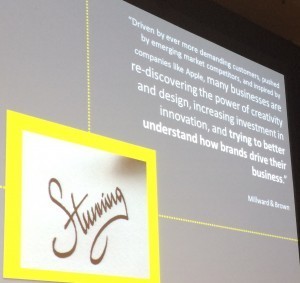 5. Understand loyalty and reciprocity. What do enterprise companies think of when they think brand loyalty? We’re in the place today where businesses need to be loyal to our customers as well as wanting their loyalty. Starbucks is hyper-focused on “you” and “we” and “our” and “us” and three to four word phrases.
5. Understand loyalty and reciprocity. What do enterprise companies think of when they think brand loyalty? We’re in the place today where businesses need to be loyal to our customers as well as wanting their loyalty. Starbucks is hyper-focused on “you” and “we” and “our” and “us” and three to four word phrases.
The biggest brands of tomorrow get this. And they are set up to succeed; this is an infrastructure play. Is your brand set up to stand out? Marketers are empowered when they wake up and know they delivered the message to the world. It’s not what you promise, it’s what you deliver.
SMX East Liveblog: Competitive Research for SEO
SMX East Liveblog: Competitive Research for SEO was originally published on BruceClay.com, home of expert search engine optimization tips.
This session dives into competitive research that will help you identify your true competition (it isn’t always who you think it is) and then assess why and how they are outranking you. Armed with this information, you can fight back and rise to the top of the SERP.
Speakers:
Casie Gillette, Director of Online Marketing, KoMarketing (@casieg)
Paxton Gray, Lead Digital Marketer, 97th Floor (@paxtonmgray)
Dennis Hart, President, Analytics SEO (@click2dennis)
Dennis Hart: Leap Frog Your Competitors’ SEO Strategies
“Everyone wants to overtake their competitors, right?” Hart says.
It’s not necessarily obvious to understand who they are – you can ask your clients or shareholders, but they might only supply local competitors. And online, local competitors can be the least of your worries. There can be competitors that your clients don’t even know about wreaking havoc via Angie’s List or other directories.
Find your TRUE online competitors by searching for your top keywords – whoever is ranking ahead of you is now your target.
Use Big Data to Determine …
How many competing sites?
How many organic ranking keywords?
What is the market search volume (use SEMrush, AdWords)?
Is the market growing or declining? Is it seasonal?
Which keywords are trending up/down, which are seasonal?
Sometimes competitors can surprise you – for example, the site MeetingZone.com outranks Match.com for some queries – but you would never think of MeetingZone.com as a competitor to Match.com without that data.
Evaluate your competitors’ sites using the following metrics:
Not all links are equal. Assess the quality of your competitors’ links looking at:
Trust Flow, Citation Flow (suggested tool: Majestic)
Domain Authority, Page Authority (suggested tool: Moz)
Domain Rank (suggested tool: ahrefs)
Casie Gillette and How to Spy on Competitors
SEO is no longer about one specific tactic. Comb the desert and find out as much information about your competitors’ practices and sites as you can.
Start by looking at the source code. Are they using:
SEO plugins
A/B Testing Codes
Schema Markup
Open Graph Tags
If they’re doing twenty things and you’re doing four, that might be why you’re not ranking.
Use these tools to track competitors’ content:
Rackedcontent – Alerts you via email when a site’s source code changes, and also stores previous version.
ChangeDetection – Also tracks content. This is how you spy on the competition.
Understanding Links
Gillette recommends using the following tools for link analysis:
Open Site Explorer (from Moz)
MajesticSEO
Research Central
TIP: Look at who else is on their IP – are they creating microsites?
Content Analysis
Use the Screaming Frog SEO Spider Tool to determine what types of content your competition is creating:
/blog
/articles
/news
/whitepapers
/videos
/resources
HACK: Some sites block Screaming Frog – so change the user agent to Google.
Social Competition
Use BuzzSumo to see a site’s top shared content and who those sharers are. Gillette also recommends Google+ Ripples and Facebook Pages to Watch for social analysis.
Paxton Gray: Cashing In with Deliberate Research
Gray cannot stress enough the importance of competitive research. He shares a the story of Noah Phelps, a soldier in the Revolutionary War who infiltrated the British army by dressing as a merchant and wandering into Fort Ticonderoga to gather key information about the enemies’ gun powder and man power. Based on his “research,” the American army was able to take the Fort when it was at its weakest and not lose a single life on either side — all this was possible because of research. The moral of Paxton’s story? For every hour you spend on competitive research, you will save an hour on execution.
5 Steps for Killer Keyword Research
Keyword Research
Gather Metrics
Identify On-Page Wins
Link Gap Score
Link Building Battle Plan
When it comes to gathering metrics, Gray advises looking at the following metrics for every keyword. “It’s a tedious process, but it pays off,” he says.

